Opinion & Analysis
Statistics that make a great Ryder Cup player and the 2014 U.S. Team standings
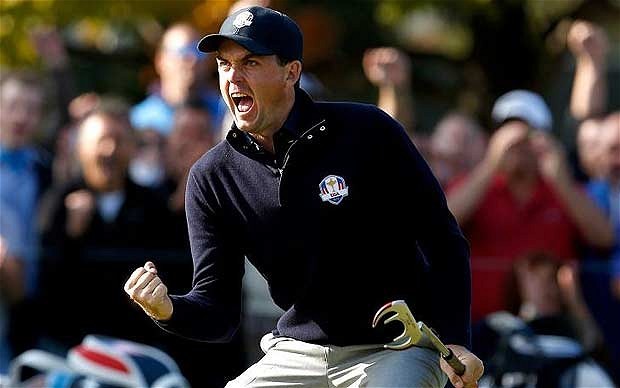
With the Ryder Cup upon us this year, I want to look at the status of the U.S. team from a statistical perspective throughout the season leading up to the event. The U.S. team will have Tom Watson as its captain with four of the 12 members being appointed by Watson. The other eight players will make the team based on points earned.
With that said, what makes for a good Ryder Cup player? This was one of the first things I examined as best as I could since most statistical data prior to 2004 is limited. In the end, I found that there were two player attributes that work very well in the Ryder Cup: a great short game from less than 20 yards around green and good putting.
Look at many of the great all-time Ryder Cup players and they tend to have this common trait: Nick Faldo, Seve Ballesteros, Ian Poulter, Luke Donald, Jose Maria Olazabal, Billy Casper, Larry Nelson, Bernhard Langer and Arnold Palmer. I don’t think anything changes the momentum in a Ryder Cup match than a player who can get his team out of trouble and save crucial pars when the other team thinks it has the hole won.
Great iron play is a player attribute that is a bit less common than a great short game, but there have been plenty of great Ryder Cupper known for their precise iron play. Think of golfers like Colin Montgomerie, Sergio Garcia, Lanny Wadkins and Lee Trevino. They were all great iron players, but they weren’t nearly as good at the other parts of the game.
What makes a good fourball pairing?
Fourball is often referred to as “best ball.” This is where the best score between two players on one team is matched against the best score between two players on the other team. All of the data concludes that the best fourball players make a lot of birdies. This is why Jim Furyk has struggled in the fourball pairings; he typically ranks low on the PGA Tour in birdie percentage.
I feel the best way to pair a fourball team is to look at the players who make a high percentage of birdies, and to pair them up based on their performance on par-3’s, par-4’s and par-5’s. For instance, if both players make a lot of birdies but only play the par-4’s well, they are likely to have difficulty winning the par-3’s and par-5’s. With that said, a captain should value par-4 play the most because there are nearly 2.5 times more par-4’s on the course than the par-3’s or par-5’s.
One of my all-time favorite pairings was J.B. Holmes and Boo Weekley in 2008. Weekley is one of the premier drivers on Tour and would tee off first. He was routinely blasting it 20 yards past Lee Westwood and still finding the fairway. When Weekley would find the fairway, that allowed Holmes to have a free rip at the ball and often times he would hit it 380 yards. If he was playable, he increased his odds of winning the hole outright. If it wasn’t, the steady ball striking of Weekley would still mean that the team had a good chance to win or tie the hole. After the front nine you could see Westwood was visibly frustrated playing the pair.
What make a good foursome pairing?
Foursome play is often referred to as “alternate shot.” Unlike the fourball play, the better players tend to be better at avoiding bogies than making birdies. Historical trends also show that the better foursome format players tend to be very good short game players around the green. Mistakes are going to be made in the foursome format and it helps to have players who can counter those mistakes and end up avoiding bogies.
It is vital for the captain to pair players based on their strengths and weaknesses as well. For instance, a poor pairing would be something like Phil Mickelson and Zach Johnson. Johnson does not play well from the rough and Mickelson struggles to find the fairway. That’s why Johnson and Jason Dufner worked so well at Medinah. Dufner was one of the most effective drivers of the ball in the world at the time, and hit a lot of fairways. That played right into one of Johnson’s strengths of hitting shots from the fairway. And that year Dufner was one of the premier iron players from longer than 150 yards and had a great year with his short game.
Versatility, youth and experience
One of the key components to fielding a team is that the captain should favor player versatility and youth over experience. A captain should look for players who can be effective in both the fourball and foursome formats. If a player struggles badly in the Friday morning foursome matches, the captain may need to sit that player until the Sunday individual matches. And that will require the captain to find a replacement for that player in the Saturday foursome matches. The more versatile the roster is, the more options the captain has and the more the captain can hide the players who are playing poorly.
This leads us to the players who continually make the Ryder Cup based on their experience instead of their performance. We see this every Ryder Cup from the U.S. team. The captain ends up picking a player who usually has a poor Ryder Cup record, but has ample experience. In my opinion, that thinking is tragically flawed because it tells us that the player has experience at underperforming at the Ryder Cup. There are always players who never get that chance at the Ryder Cup, and we are left wondering how they would have performed if they were given the opportunity. But here we have certain players who have been given the opportunity to play in the Ryder Cup and we know that they will perform poorly.
Often times it is not the player’s fault. For instance, Davis Love III caught a lot of flak for making Jim Furyk a captain’s pick. Furyk played brilliantly in all of 2012 and actually played quite well at the Ryder Cup. His playing partner, Brandt Snedeker, played poorly and cost him a match with what was thought of as Europe’s best team in Rory McIlroy and Graeme McDowell. And Furyk was within a small fraction of halving his match with Sergio Garcia. The issue with Furyk is that he is not a versatile player. He is only good for the foursome format and given his age, Love had to limit the matches he could play in order to keep him fresh. So if Furyk came out on fire, the captain can’t use him in the rest of the matches in fear of burning him out.
Here’s a look at the top-12 U.S. players in Ryder Cup points so far (accurate as of 9/10/14), as well as a breakdown of their strengths and potential best pairings.
1. Phil Mickelson
Mickelson’s getting up there in age, but he has developed a game that is more versatile for Ryder Cup play. He is usually best suited for fourball, but with his vast improvement in his putting since working with Dave Stockton he has made himself a much better Foursome player if he is paired with a player who can hit difficult shots out of the rough like Keegan Bradley or Bubba Watson. However, Watson is a weak putter and short game player and would not likely make a good foursome player.
So there are some limitations on what Phil can do given his age and style of play, but he is likely more effective of a Ryder Cup player than any other time in his career. Mickelson’s issues always come down to his driver, but he has actually struck the ball well off the tee so far this year.
2. Jason Dufner
If Dufner regains his 2012 form where he was an elite driver, iron player and short game artist, he is nearly ideal as a Ryder Cup player because he can play in either format with just about any type of player and make their job quite easy. Dufner’s iron play dropped off quite a bit in 2013 and then picked up before the PGA Championship. He’s never been a great putter, but if the rest of his game is like it was in 2012 then Watson should be able to work around it.
3. Dustin Johnson
For a bomber, Johnson is quite versatile because he has shown the ability to perform well in numerous parts of the game. For example, he ranked 12th in short game play in 2013. Johnson is still best suited for fourball given his ability to make birdies, and he performs extremely well on the par-3’s and par-5’s. He is one of those players that could get hot early on and Captain Watson could ride out for the rest of the tournament.
4. Ryan Moore
Moore is ranked 4th because of the start to his 2013-2014 season, as his 2013 season was not overly impressive. He tends to make more birdies than bogeys, and driving is typically the strength of his game. I think he is best suited for the fourball format with a golfer that can really bomb it off the tee and plays the par-3’s well (i.e. Dustin Johnson). I would have Moore tee off first and get his drive out there. If he executes, then let the bomber get a free rip at the ball. I am remain skeptical, however, that Moore can continue this pace and earn a spot on the U.S. team.
5. Harris English
English is only in his 2nd season on Tour so I have limited data on his game. He ranked 17th in Birdie Percentage in 2013, and was very good on the par-4’s and par-5’s. He is also a great putter (14th in Putts Gained in 2013) and a good driver of the ball. His iron play and short game will have to improve this year in order to consider him for the foursome format. For now, he is clearly a favorite for the fourball format and I would probably try to pair him with a strong par-3 and par-4 player (i.e. Dustin Johnson, Jason Dufner, Phil Mickelson, etc).
6. Webb Simpson
Simpson had two very different years in terms of ballstriking in 2012 and 2013. In 2012, he was arguably the best iron player in the world, particularly from the fairway, but he struggled mightily off the tee. In 2013 he drove it fairly well (67th in Driving Effectiveness), but regressed into an above average iron player. He only ranked 77th on iron shots from the fairway.
Meanwhile, his putting and short game remained quite steady, being very good in both areas of the game. He is excellent at the par-3’s, par-4’s and par-5’s and is better at making birdies than bogeys, but ranks well in both categories. This makes for a versatile player, but he is better suited for fourball. I liked his pairing with Bubba Watson in the fourball in 2012, but not in the foursome format. It’s really going to depend on what style of play shows up for Simpson in 2014.
In 2012, the simulations favored Simpson playing with Jason Dufner in the foursome format. If the Ryder Cup was held in 2013, Brandt Snedeker would have been the most favorable partner for Simpson in the foursome format.
7. Jimmy Walker
Walker has been putting extremely well in the 2013-2014 season, which has led to his current ranking in Ryder Cup points. He hits it very long, but he was a mediocre driver of the ball last year (155th in Driving Effectiveness). He was also mediocre on iron shots from the fairway (124th), but excellent from the rough (16th). Walker ranked 26th in both Birdie Percentage and Bogey Avoidance and played the par-4’s and par-5’s very well. This leads me to believe at this moment he is not very versatile as a Ryder Cup player and is mostly suited for the fourball format.
I would pair Walker with a player that can play the par-3’s well like Dustin Johnson or Webb Simpson. If I had to put him in the foursome format, I would look for a long, but effective driver of the ball: someone who can hit it long so that it can make up for Walker’s weak iron play. And a player that has a good enough short game to clean up any of Walker’s misses. Dustin Johnson appears to be an ideal partner in this format.
8. Chris Kirk
Kirk has the makings of a breakout star if he makes the Ryder Cup. Just take a look at these rankings in key metrics in 2013:
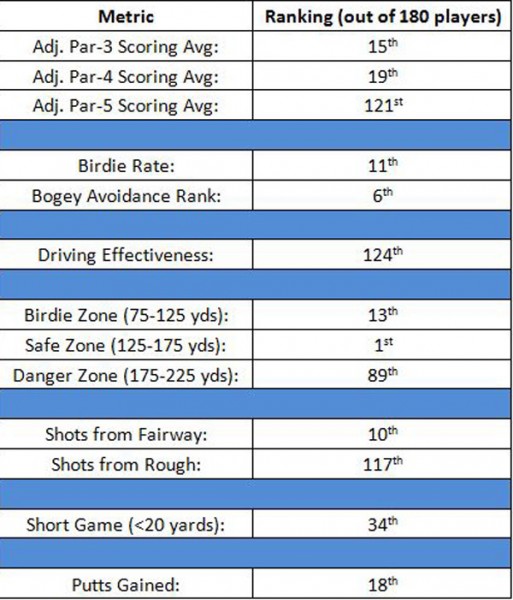
Kirk would be best suited for fourball given his ability on the par-3’s and par-4’s, as well as his ability to make a lot of birdies. He would just need to be paired with a great par-5 player like Bubba Watson, Phil Mickelson, Tiger Woods or Keegan Bradley.
Kirk could fit into the foursome format if he is paired with the right player. He will need a partner who drives it effectively while keeping the ball in the fairway. That will play right into Kirk’s strength of hitting iron shots from the fairway. And the longer and more accurate the golfer, the better it works for Kirk since he is so good from inside 175 yards. My simulations show that Kirk would work nicely with Keegan Bradley, Jordan Speith, Webb Simpson and Kevin Streelman.
9. Jim Furyk
Keep him out of the fourball format and you’re pretty much fine. I would also pair him with an accurate driver of the ball as hitting out of the rough is not one of Furyk’s specialties, as well as a golfer who hits it well from 175-or-more yards given Furyk’s lack of distance off the tee. Zach Johnson would be a nice pairing. The same goes for Jordan Spieth and Steve Stricker.
10. Jason Bohn
Bohn is a longshot to make the team, and is on this list based on his play at the Shriners Hospital For Children Open and OHL Classic at Mayakoba. He also turns 41 years old in April.
His strength has always been his iron play from inside 175 yards, particularly from the fairway. He did rank 35th in Birdie Percentage last year, but ranked 119th in Bogey Avoidance. I think he’s best suited for the fourball format with a partner who makes a lot of birdies, but also does a great job of avoiding bogeys and plays the par-5’s very well. The numbers would favor Bohn being paired with Tiger, Stricker or Keegan Bradley in the fourball format.
In the foursome format, he would probably only work well with Bubba Watson because of Watson’s length and overall effectiveness off the tee. Bohn is an unlikely Ryder Cup candidate, but stranger things have happened.
11. Gary Woodland
Woodland seems to finally be getting his game to click. He’s a power player and was struggling to play towards that strength. However, he is likely relegated towards the fourball format because he is one of the worst short game players on Tour. And despite his power, he has never been a great player on the Par-5’s.
Woodland ranked 27th in Birdie Percentage and 92nd in Bogey Avoidance in 2013. So, he would best off with a high-birdie-rate player who can avoid bogeys and play the par-4’s and par-5’s well in the fourball format. Webb Simpson could be an excellent fit for him. If he were to play in the foursome format, it would be best to stick him with an excellent iron player — particularly from the rough — who can putt well to make up for Woodland’s struggles from around the green. Jordan Spieth, Phil Mickelson and Brandt Snedeker top the list as the most suitable teammate for Woodland in the foursome format.
12. Brian Stuard
Stuard recorded three top-6 finishes in a row and also had a T15 at the Shriners, which has earned him his top-12 ranking thus far. Stuard is 31 years old and not a long hitter, but he drives it effectively off the tee (68th in 2013) and putts pretty decently (79th in Putts Gained in 2013). He’s a very steady, Jim Furyk-type of player who ranked 23rd in Bogey Avoidance and 138th in Birdie Percentage. This means that if he were to make the Ryder Cup, he would fit more into the foursome format and should avoid the fourball format at all costs.
Stuard would be best paired with a good iron player, particularly from the fairway to take advantage of his accurate driving and to avoid his need to scramble (Stuard was 131st in Short Game play in 2013). It would also help to have a partner who can find the fairway off the tee in order to help him with his below average iron play. Therefore, he would fit best with Furyk, Spieth, Tiger or Snedeker at this point in time.
Look for an update, Part 2 of this series, after the 2014 Masters!
- LIKE0
- LEGIT0
- WOW0
- LOL0
- IDHT0
- FLOP0
- OB0
- SHANK0
Courses
The BEST hidden gem links courses in the UK & Ireland

Another Open Championship has come and gone and links golf was once again in the spotlight at Royal Troon! For those who have never played a links course (like myself), it sparks a desire to fly across the pond to experience it for ourselves. While a golf trip to the UK or Ireland is a bucket-list item, most people look to play the big-name courses (Old Course, Carnoustie, Lahinch, Royal Portrush,etc.), but don’t realize they can get a similar experience by traveling to some of the lesser known destinations where you will find some of the purest links courses in the world. With this in mind, here are our picks for the best hidden gem links courses you should play when you book a UK or Ireland trip:
IRELAND
We start our list off with a 36-hole club in the Northwest of Ireland, a remote area of the Emerald Isle that is known for its rugged terrain and spectacular scenery. Bordering the Wild Atlantic Way, Ballyliffin is relatively newer (est. 1947) but offers golfers one of the purest links golf experiences anywhere in the country. While not easy to get to, the two courses onsite (Old and Glashedy) are well worth the travel with large dunes shaping the fairways that overlook the North Atlantic Ocean and a myriad of pot bunkers everywhere you look. Even Rory McIlroy believes that “Ballyliffin’s two courses are a must play on any golf trip to Ireland.” and we tend to agree.

How to incorporate Ballyliffin in a golf trip:
Stay:Ballyliffin Lodge, Hotel & Spa
Play: Old Links & Glashedy Links at Ballyliffin, and Old Tom Morris Links or Sandy Hills Course at Rosapenna
The next course on the list is in the Sligo area of the Northwest where we find Enniscrone, roughly 3 hours (by car) south of Ballyliffin. Like many links courses, Enniscrone was originally a 9-hole course when it was opened in 1918 before an additional 9 holes were added 12 years later. In 1970, Eddie Hackett was tasked with redesigning the course to help the two 9-hole courses flow effortlessly into one 18 hole layout. A big feature that can be seen throughout your round here are the towering dunes that shape the course and protect some holes from the ocean winds. Built right out of the landscape of the dunes bordering the sea, the course has a lot of undulation in the fairways and greens with some elevated tee boxes providing unreal views of the natural land.

How to incorporate Enniscrone in a golf trip:
Stay: The Glasshouse Hotel, Sligo
Play: Enniscrone, County Sligo, and Donegal
Additional Courses: Strandhill, Carne, and Narin & Portnoo
Another fantastic gem on the Northwest coast of Ireland is the NEW (2020) St. Patricks Links at Rosapenna Hotel & Golf Links. The land was purchased back in 2012 which was already a 36-hole facility and Tom Doak was brought in to reimagine the property to the layout it currently is today. Large sand dunes shape the front 9 holes before heading back through some more subtle dunes back towards the clubhouse. The course offers elevation changes with some tee boxes sitting atop the dunes offering spectacular views of Sheephaven Bay and beyond. With two other courses and a fantastic hotel on property, this destination is all you could ever ask for.

How to incorporate St. Patricks in a golf trip:
Stay: Rosapenna Hotel & Golf Links
Play: St. Patrick’s Links, Sandy Hills Course , and Old Tom Morris Links (all at Rosapenna)
For our last hidden gem in Ireland, we head 30 minutes north of the country’s capital, Dublin, to The Island Club. Built along rugged terrain and the highest sand dunes on the east coast of Ireland, the Island Club is situated on a small peninsula surrounded by water on three sides providing a difficult challenge, especially with the winds. Founded in 1890, the Island Club continues to be ranked in the Top 10 courses in Ireland and has held some Amateur Championships and Open Championship Regional Qualifiers.

How to incorporate The Island Club in a golf trip:
Stay: The Grand Hotel, Malahide
Play: Island Club, Portmarnock Old, County Louth
Additional Courses: Royal Dublin
SCOTLAND
Located along “Scotland’s Golf Coast” of East Lothian is where we find the classic links of Dunbar. Opened in 1856 with only 15 holes, this is one of the many courses in Scotland that Old Tom Morris had a hand in crafting. Laid out along rocky and rocky terrain, the course is only 6500 yards long and while not long by modern standards, the course requires shot making and proper club selection to play well. The course has held many national and international tournaments including a few rounds of The Open Final Qualifying.

How to incorporate Dunbar in a golf trip:
Stay: No. 12 Hotel & Bistro
Play: Dunbar, Gullane (No.1), North Berwick
Additional Courses: Craigielaw, Kilspindie, Gullane (No.2, No. 3)
The next course on our list brings us to the Scottish Highlands, one of the lesser traveled destinations in Scotland, but still home to some amazing links courses including Cruden Bay! Located 25 miles north of Aberdeen on the east coast of the Highlands, Cruden Bay was opened in 1899, although history would indicate golf has been played at the property since 1791. Another Old Tom Morris design, the course is consistently ranked in the Top 25 of courses in Scotland and it is easy to see why. At only 6600 yards, it is relatively short, but the natural lay of the land provides elevation changes, punchbowl greens, and some large, 3-story high dunes that offer spectacular views for a classic links experience.

How to incorporate Cruden Bay in a golf trip:
Stay: Leonardo Hotel Aberdeen
Play: Cruden Bay, Trump International Links, Royal Aberdeen
Additional Courses: Murcar
We head back to the Highlands just north of Dornoch to where we find Brora Golf Club. Similar to a lot of links courses, Brora opened as only 9 holes in 1891, but that only lasted for 9 years before an additional 9 was added in 1900 before a James Braid redesign in 1924. At just over 6200 yards, this is one of those courses that will make you appreciate links golf in Scotland with cattle and sheep roaming freely around the property. The course is a typical links routing with the front 9 going out and the back 9 coming back to the clubhouse. The defense of the course is the wind (naturally), but the greens are relatively small with pot bunkers standing guard to catch errant approach shots.

How to incorporate Brora in a golf trip:
Stay: Royal Golf Hotel, Dornoch
Play: Brora, Royal Dornoch – Struie & Championship
Additional Courses: Golspie, Tain
Staying in the Scottish Highlands, the last Scotland links gem on the list is just outside of Inverness at The Nairn Golf Club. The narrow fairways are fast and firm leading to decent sized, tricky greens that roll true, but are guarded by devious pot bunkers. The first seven holes play right along the water and with not a ton of elevation changes, spectacular views across the Moray Firth can be seen throughout the course. With fantastic course conditions throughout the season, this fantastic links is an absolute must-play when visiting the Highlands.

How to incorporate Nairn in a golf trip:
Stay: Kingsmills Hotel, Inverness
Play: Nairn, Castle Stuart (Cabot Highlands), Fortrose & Rosemarkie
Additional Courses: Nairn Dunbar, Moray

Golfbreaks by PGA TOUR highly recommends you start planning your trip across the pond AT LEAST 12-18 months in advance in order to secure tee times and hotel rooms over the dates you desire. With more and more people taking up the game of golf, these bucket list trips have already become extremely popular and will continue to gain interest so make sure to start planning early!
RELATED: Open Championship courses you can play (and when the best time to book is)
Editor’s note: This article is presented in partnership with Golfbreaks. When you make a purchase through links in this article, GolfWRX may earn an affiliate commission.
- LIKE21
- LEGIT1
- WOW1
- LOL1
- IDHT0
- FLOP3
- OB0
- SHANK4
Courses
Open Championship courses you can play (and when the best time to book is)

The final major of 2024 is nearly here as the top golfers head to Scotland’s southwestern coast to battle for the claret jug at Royal Troon. Golf’s original major dates all the way back to 1860 and has been played at 14 different courses throughout the United Kingdom (yes, this includes Northern Ireland) providing countless memories including celebrations, heartbreak, and unique moments that will never be forgotten (looking at you Jordan Spieth).
With The Open teeing off less than a week from now, we wanted to highlight some of The Open Championship’s finest links courses that should play when you make the journey to golf’s homeland:
- Old Course at St. Andrews
- Carnoustie
- Muirfield
- Royal Portrush
- Royal Troon
- Royal Birkdale
- Royal St George’s
Old Course at St. Andrews

Do we even need to say anything else? The “Home of Golf”, host of 30 Open Championships, the most coveted tee time in the WORLD, there are a million reasons to have St. Andrews on your links golf bucket list. From the double greens, to the tee shot over the Old Course Hotel, to the walk up 18th fairway with the town buildings framing a picturesque scene (especially at dusk), every golfer should make the voyage to St Andrews at least once in their life.

Carnoustie

Carnoustie – Championship Course
Roughly 25 miles north of St. Andrews lies the devious links of Carnoustie, often recognized by the large white Carnoustie Golf Hotel as the backdrop of the 18th green. While the course has only hosted The Open 8 times, it is considered to be one of the hardest layouts in The Open rota (just ask Jean Van de Velde) although not that long, playing just under 7000 yards from the tips.
Muirfield

Located right next to this week’s host of Scottish Open (The Renaissance Club), this fantastic links layout has hosted the prestigious Championship 16 times since 1892. The narrow fairways and penal rough requires precise shots off the tee while avoiding the devious pot bunkers is a must. The course is set away from the coastline so you won’t get the sweeping ocean views, but a round at Muirfield is one the premier tee times in all of Scotland (so make sure you book early – 12-18 months at least).
Royal Portrush

A view of the new 572 yards par 5, seventh hole designed by Martin Ebert on the Dunluce Course at Royal Portrush Golf Club the host club for the 2019 Open Championship in Portrush, Northern Ireland. © 2018 Rob Durston
Our next stop brings us across the Irish Sea to the northern coast of Northern Ireland and the popular Royal Portrush. Having hosted The Open only twice in its illustrious history, Royal Portrush is a golfer’s dream with 36 holes of pure links golf set against a gorgeous backdrop of the ocean and cliffs. The Open Championship will return to Portrush in 2025 and YOU CAN BE THERE to watch it all in person!
Royal Troon

TROON – JULY 26: General view of the ‘Postage Stamp’ par 3, 8th hole taken during a photoshoot held on July 26, 2003 at the Royal Troon Golf Club, venue for the 2004 Open Championships, in Troon, Scotland. (Photo by David Cannon/Getty Images)
The host of this year’s Open Championship, Royal Troon is home to one of the best par-3 holes in all of golf, “The Postage Stamp.” A downhill 125-yard tee shot to a minuscule green surrounded by bunkers on all sides makes it one of the more challenging holes. Another hole that adds to the challenge is the 601-yard par 5 that used to be the longest golf hole in Open Championship history. This year will be the 10th Open Championship held at Royal Troon, the first since 2016 when Mickelson and Stenson had a battle for the ages in the final round.
Royal Birkdale

For the next course on the list, we have to head down to the northwest coast of England just outside of Liverpool. Consistently ranked in the Top 10 courses in all the UK, this 10-time host of The Open has hosted many other prestigious events such as Ryder Cups, Women’s Opens, and more! The course is laid out with fairways running through flat-bottomed valleys surrounded by high dunes which provide many blind shots throughout the course. The Open returns to Royal Birkdale in 2026 so it won’t be long before it is back in the spotlight.
Royal St. George’s

For the final course on our list, we are staying in England, but heading across to the southeastern side of the country to Kent. Royal St. George’s is 4th on the list of most Open Championships hosted with 15 (1 behind Muirfield) the most recent being Collin Morikawa’s victory in 2021. RSG is the only active course on The Open rota in this part of the UK, but two former hosts (Prince’s and Royal Cinque Ports) are within 3 miles of the property. The expansive course is laid out with holes separated by dunes with heavy rough, undulating fairways, and deep pot bunkers to challenge your game. While it may not be mentioned in the discussions of St. Andrews, Carnoustie, and the like, Royal St. George’s is still a Championship layout that is worth the trip across the pond.

With these big-name courses in such high demand, it is important to note that if you want to play them, you need to start planning your trip early. Golfbreaks by PGA TOUR, the world’s #1 rated golf tour operator, suggests planning and booking your trip at least 12-18 months in advance in order to secure a tee time at the courses you want. The UK & Ireland specialists at Golfbreaks by PGA TOUR have the knowledge to help tailor the perfect golf trip for your group so you can play big-name courses and hidden gems you might not have heard of. If you’re ready to start planning your bucket list trip across the pond, make life easier and go with Golfbreaks by PGA TOUR.
Editor’s note: This article is presented in partnership with Golfbreaks. When you make a purchase through links in this article, GolfWRX may earn an affiliate commission.
- LIKE12
- LEGIT1
- WOW0
- LOL0
- IDHT0
- FLOP0
- OB0
- SHANK0
Courses
Ryder Cup 2025: Crossing to Bethpage – New York State Park golf, Part 1

The 2025 Ryder Cup matches will be held over the sprawling, bruising, Long Island acreage known as Bethpage Black State Park Golf Course. The course has hosted multiple national championships, most recently the 2019 PGA Championship. In September 2025, Bethpage Black will welcome teams from the USA and Europe to contest the 45th Ryder Cup matches. Team Europe, the defending champions, will be led again by captain Luke Donald. The U.S. PGA has not yet announced the name of its leader, yet all sources and speculations point to a 15-time major champion and an eight-time participant in the biennial event.
Bethpage Black will join Oak Hill Country Club in Rochester (1995) as the second Empire State course to host the event. The Ryder Cup matches were played in the metropolitan New York area once before, in 1935 at the Ridgewood Club, in Paramus, New Jersey. It’s fair to say that metro NYC is due to host this world-stage, golf event. I can’t wait. The USA’s loss to Europe in 2023 adds to the considerable drama.
What makes Bethpage Black an outlier in the world of championship golf, is its mere existence. It’s a state park golf course, one of five on property, each with a colorful name. The Red, Green, Blue, and Yellow join big brother Black as outstanding tests of golf in Farmingdale. Of the five, only the Green was not originally built as a state course. The Lenox Hills Country Club, designed by Devereux Emmet, opened in 1923. By 1932, the club had closed and the land had become property of the state. Its birth date made the Green the oldest of the five courses. New York State began to build on a series of adjacent parcels, guided by the hands of Alber “A.W.” Tillinghast, Joseph Burbeck, and Alfred Tull. The Yellow course, built entirely by Tull, was the last of the five to open.
State park courses just don’t hold major championships. Private clubs and elite resorts are the typical sites that receive the nod from the world’s golf bodies. It’s a testament to the lovers of Bethpage, the New York state government, and the PGA of America (among others) that Bethpage is as good as it is, and that it continues to improve. It’s a fitting site for the 2025 Ryder Cup matches, but the 2025 Ryder Cup matches need a beginning to their story. I’ll do my best to provide it.
- Bethpage Yellow Golf Course
- Bethpage Black Golf Course
- Bethpage Red Golf Course
- Bethpage Yellow Golf Course
- Bethpage Black Golf Course
- Bethpage Green Golf Course
- Bethpage Blue Golf Course
- Bethpage Red and Black Golf Courses
- Bethpage Green Golf Course
- Bethpage Red Golf Course
The quintet of courses near Bethpage, New York, is just the beginning of the New York state park golf course system. 19 parks in total offer golf from the tip of Long Island, to the shores of Lake Ontario, through the Catskill mountains, to my home town. I’m a Western New York guy. The Buffalo area has been my home for most of my 58 years on the golf ball known as Earth. I live two miles from the westernmost, state park golf course: Beaver Island. The Beav, as everyone calls it, was designed by William Harries. It opened the year I was born, which means that it is close to 60 years old! Unlike the Bethpage property, where topography is king, the Beav is a flat course, albeit full of enough interest to bring you back for more.
As I considered the magnitude of the state park system, I realized that golfers who frequent those 19 state parks can point to their home course and say, “You know, the Ryder Cup will be at a state park course next year.” I started to count on my fingers, the number of state park courses I had played: Beaver Island, Green Lakes (Syracuse), James Baird (Poughkeepsie), and the five at Bethpage, I realized that I had played eight of the 23 total courses, and had visited a mere four of the 19 parks.
Bethpage is the only, multi-course state park across the Empire State. Other venues range from pitch-and-putt, to nine-hole, to regulation 18-hole courses. The majority occupy nice tracts of land, and feature 18 holes of memorable, enjoyable golf. PGA Tour professionals Joey Sindelar and Mike Hulbert grew up on one of those courses, and Dottie Pepper spent a bit of time on another, near her hometown.
There will be many stories that trace the path to Bethpage and its 2025 Ryder Cup, and I look forward to reading and hearing them. This one is my own, and I’m proud (and a little frightened) to undertake it. I’ll visit each of the remaining parks over the next 16 months, and report in with images and words that tell the story of each park and its golf course.
The Ones I’ve Played
The Bethpage Five
As mentioned above, I’ve played eight of the 23 courses, but the majority of that number is owed to a 2011 pilgrimage to Long Island. The Black had just hosted its second US Open championship, and the ink for the 2019 PGA Championship was not yet printed. I spoke with a Bethpage caddy, in anticipation of the trek. I wrote a series of articles on the courses on my own site, BuffaloGolfer. Down the road of this, current series, I’ll discuss the most poignant piece that I connected with Bethpage. That’s a story for another time. After all, Bethpage is a five-course meal.
It’s safe to say the the Bethpage property is unlike any other, municipal, golfing space in the world (at least, those not named the Links Trust of St. Andrews!) The park encompasses nearly 1500 acres of wooded land and offers much beyond golf to its visitors. As pilgrimages go, Bethpage is it. For a New York state resident, on a weekend, it would cost a total of $257 dollars … to play all five courses. Even for those outside the state, the trip to Bethpage is worth consideration. Each course rambles over uneven, heaving land. Holes carry along falloffs and bend unexpectedly around corners. Greens are benched into hillsides and settled into valleys. All five courses remind you of the others, yet none of them says to you “You’ve played this course before.”
James Baird State Park
One of the hats that I wear, is high school golf coach. Each spring, golfers from my team travel to Poughkeepsie to play the James Baird State Park golf course. Pronounced “Bard,” the course was opened in 1948, after a middle-aged, Robert Trent Jones, senior, put pen to paper to lay out the course. Jones was about to become a household name, as he would offer renovation advice to many of the country’s classic clubs. He was most famously associated with the Oakland Hills Country Club near Detroit, the host site of the 1951 US Open. You know, the one where Ben Hogan purportedly gasped “I’m glad I brought this course, this monster, to its knees.”
Trent didn’t leave a monster in Poughkeepsie. What he left was something that locals call Baby Bethpage. The James Baird course is blessed with topography similar to its five-course cousin, but it offered a challenge that Bethpage does not: a huge expanse of marsh across the belly of the property. There was not going over nor through it, so Jones simply went around it. He created something that he never, ever did: a short par three. Jones was a fan of the brutish, 200-yard plus, all-carry, par three hole. For the third hole at Baird, he had all of 120 yards, and it was downhill! Jones placed a green in the marsh, connected to the mainland by an earthen bridge. He then turned north for a time, then returned south, outside the marsh. Trent Jones had another stretch of tricky land to navigate, this time, on the inward half. He brought a trio of holes (pars 4-3-5) through a challenging corner of the property, before returning to the open meadow that hosts the majority of the layout.
James Baird is a tremendous golf course, one that prepares our high school competitors well for the next step: the state federation championship at, you guessed it, Bethpage Black. Six golfers move on to compete against other, high school divisions, at the big brother of them all.
- James Baird State Park
- James Baird State Park
- James Baird State Park
- James Baird State Park
- James Baird State Park
- James Baird State Park
- James Baird State Park
- James Baird State Park
- James Baird State Park
- James Baird State Park
- James Baird State Park
- James Baird State Park
Green Lakes
The Baird course came to life 13 years after Trent Jones opened his first, New York state parks course. Originally from Rochester, New York, Trent ventured 90 minutes east to Manlius, near Syracuse, in 1935, to lay out one of his first ten courses. RTJ was gifted the magnificent land that abuts the two glacial lakes in central New York. The lakes are meromictic, which we all know means that surface and bottom waters do not mix in the fall and spring, as happens with dimictic lakes.
Trent Jones placed his clubhouse and finishing greens (9 and 18) in an interesting portion of the property. The ninth hole is an uphill, par five that plays fifty yards longer than its measured distance. Once home to upper and lower greens, the lower has been expanded and enhanced, and the upper is now abandoned. On the other side of the clubhouse, the sneaky 18th moves out of a corridor of trees, into the open space beneath the clubhouse. It’s a bit reminiscent of the 18th at Bethpage’s Green course. It’s not a long hole, yet when you walk off with five or six on your card, you wonder where you went astray.
- Green Lakes State Park
- Green Lakes State Park
- Green Lakes State Park
- Green Lakes State Park
- Green Lakes State Park
- Green Lakes State Park
- Green Lakes State Park
The front half of the course plays along a vast meadow, above Green Lake, the larger of the two, nautical bodies. The inward side forages among the tree above Round Lake, before finally emerging at the home hole. The apparent contrariety of the two nines is resolved through expansion of fairway corridors on the treed nine, and the constriction of playing paths with bunkers and doglegs, on the exposed side.
If you’re a walker, Green Lakes will make you a fit one. It will also demand all the clubs and shots that you can fit in your bag.
Beaver Island
“Tame” isn’t the proper term to describe Beaver Island, the state park course near my home. I believe that “calm” is a better term. It may seem ironic, given that the 1965 course occupies a tract of land at the southern tip of Grand Island, where the Niagara River splits east and west, before reuniting at the north end. When we think of the Niagara, we think of the mighty rapids and cascades near the brink and bottom of the falls. At the southern split of the river, however, you can throw a canoe in the water and have a paddle. Beaver Island knows that it is adjacent to the river, but you never get the sense that this golf course borders water. I’ve redesigned the park hundreds of times in my head, moving the golf course to the banks of the river, where the trails, beach, playground, and other amenities are currently found. In the end, not every great golf course can, nor should, be built.
William Harries trained under the famed competitor and architect, Walter Travis. Despite this exposure to the master, Harries went his own way with his golf courses. The most striking difference is in green construction. While Travis was extraordinarily creative and daring, Harries was the polar opposite. His greens are routinely flat and easy to navigate.
He designed a number in the western New York area, including Brookfield Country Club. Originally known as Meadow Brook, the club hosted the 1948 Western Open, won by the aforementioned, Ben Hogan. The majority of Harries’ work was in municipal courses, and he designed Sheridan Park for the town of Tonawanda. That course hosted the 1962 USGA Public Links championship.
- Beaver Island State Park
- Beaver Island State Park
- Beaver Island State Park
- Beaver Island State Park
- Beaver Island State Park
- Beaver Island State Park
- Beaver Island State Park
- Beaver Island State Park
On Grand Island, Harries traced his layout around three ponds. The massive, western one, comes into play on the second through fifth holes. The middle one plays games with the approach to the eighth green. The final one, on the inward side, forces golfers to carry their tee shot over water, to the 14th fairway. Beaver Island bears no resemblance to the topography of the other locales mentioned previously. There is no heaving, no tumbling, no turbulence, along its fairways. Beaver Island is more St. Andrews in its flattish presentation, which makes it an honest, what-you-see, sort of golf course. It’s an enjoyable walk in the park, a not-too-demanding one.
Part Two: south-central New York-Soaring Eagles, Chenango Valley, Indian Hills, and Bonavista
- LIKE3
- LEGIT0
- WOW0
- LOL0
- IDHT0
- FLOP0
- OB1
- SHANK0
-

 Product Reviews2 weeks ago
Product Reviews2 weeks agoThree Swing Challenge: Testing the Edel Array F-2 putter
-

 Equipment2 weeks ago
Equipment2 weeks agoWhat clubs do equipment free agents choose to use on tour? We found out
-

 News3 weeks ago
News3 weeks agoHighlights from the Wilson Golf Product Testing and Fitting Experience at Pinehurst
-

 News3 weeks ago
News3 weeks agoDavis Thompson’s winning WITB: 2024 John Deere Classic
-

 19th Hole2 weeks ago
19th Hole2 weeks agoMajor champ ‘disappointed’ not to be chosen as U.S. Ryder Cup captain
-

 Whats in the Bag6 days ago
Whats in the Bag6 days agoXander Schauffele’s winning WITB: 2024 Open Championship
-

 19th Hole3 weeks ago
19th Hole3 weeks agoIan Poulter explains decision to skip Open Championship qualifying
-

 19th Hole3 weeks ago
19th Hole3 weeks agoLIV pro explains how he believes players are ‘cheating’ on DP World Tour



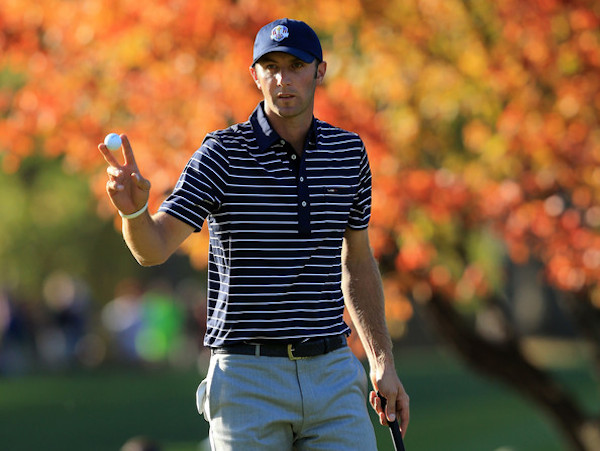

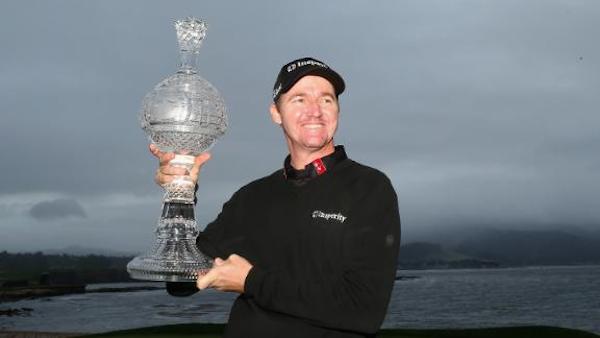
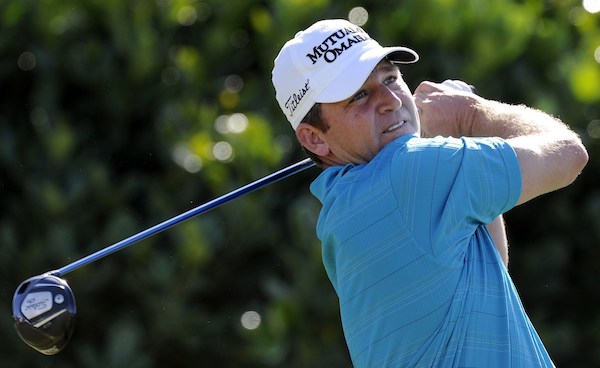
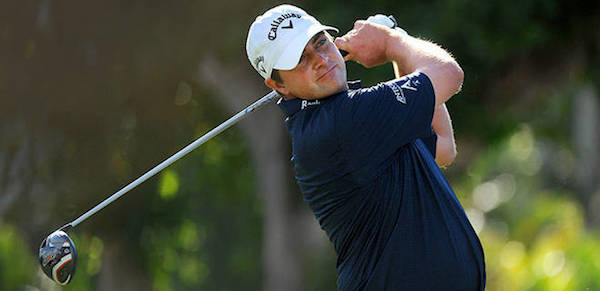








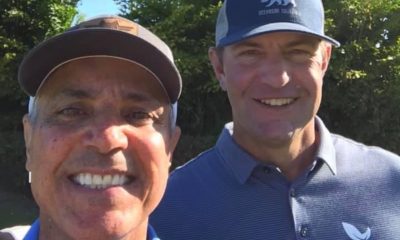

























































PA PLAYA
Feb 11, 2014 at 5:50 pm
I couldn’t agree more with your thoughts about short game and putting. It has been, and will continue to be, the difference between winning and losing, especially in an event where it’s pretty much a given that just about every player on the team is at the very least a decent ball striker and wedge player.
Absolutely nothing against Ian Poulter, who single handedly turned the momentum against us in that final match Saturday afternoon at Medinah. He was the warrior who rallied the troops that evening, the catalyst for one of the most unbelievable comebacks in European RC history. You take away his ability to putt – he becomes just another run-of-the-mill Ryder Cupper. But those of us who’ve followed him over the past decade, those of us who pull for the Red White and Blue – he’s the one player we least want to see standing over a putt of any significance.
He’s fearless. He’s fearless because he knows that despite giving up 25+ yards off the tee, he can still get the ball into the hole in fewer strokes than his opponents in this event.
Not that team chemistry and all of these other performance aspects aren’t important, but if you don’t have a few great putters on your team who know no fear – you’re probably not going to win very often. It’s tough to find seasoned veterans who aren’t afraid of missing putts, and that pretty much describes all but one US Ryder Cup team over the past 15 years.
Mike H.
Feb 11, 2014 at 11:56 am
Finally someone else that thinks we need youth in the Ryder Cup. The last time the USA won they had a roster full of rookies. Yet we continually are told by the “experts” that you need experience on the team. The only “experience” some of these guys have is the experience of getting beat. It’s time to bring in guys like Spieth, English, and others.
Richie Hunt
Feb 11, 2014 at 3:10 pm
Thanks.
I think with youth the potential is that they may catch lightning in a bottle, much like the Euros did with some of their young players like Sergio and Olazabal. It also helps future teams because a young player may perform exceptionally well at one Ryder Cup and then not qualify for the next Ryder Cup and at least the captain can now consider that player based off their previous performance. Whereas if the young player is never selected, then in the next Ryder Cup it will be difficult for a captain to decipher if he’s worth picking or not.
The Europeans top-20 talent or so is pretty much event with the US top-20 talent. But the US Tour has an entirely deeper talent pool. It’s time that the US team and the people in charge start to try and use that deeper talent pool to their advantage.
IfIfIf
Feb 10, 2014 at 9:15 pm
http://www.youtube.com/watch?v=EnV8kpLotW4
10.00 and onwards….
Richie Hunt
Feb 10, 2014 at 8:23 pm
Thanks. I think the captains need to use statistics to best understand what format best suits the player and what players would likely work best together instead of pairing up players because they are friends. They also need to get every player playing on Day 1 if they can so they can figure out who is hot and who is cold, then ride the hot hands and keep the cold players on the sidelines. I think Furyk could have been a solid career Ryder Cupper if they kept him away from the Fourball format.
Brandel Chamblee
Feb 10, 2014 at 7:44 pm
Nice write up. I’m tired of watching the USA getting pounded by Europe as of late. The Ryder Cup reminds me of the movie miracle because USA puts out the best players even though the margin may be shrinking but we need to start putting out the right players. Pulter is the perfect example because he probably will never win a major but I would never bet against him playing Webb Simpson. USA needs more Keegan Bradley’s and Jordan spieths. I want to see tiger exclamation fist pumps. I love the energy and passion the Ryder cup brings. Furyk and Stricker are great players but I would rather have guys that are not afraid like Ricky fowler and don’t have the scars of previous cups. I love the money ball approach. Please do a follow up closer to the event and look at Europe as well if you can.
Teamer
Jul 9, 2014 at 4:32 pm
Fowler is right on. Corey Pavin thought so. How about his match play success, including Walker cup experience. He has fight and calmness not seen in to many of todays young players.